Hello! It looks like the rainy season is almost over in Japan – much earlier than usual!
In the past, the end of the rainy season marked the time when staves (wooden posts) for making sake casks and tubs were delivered to the sake breweries. In this article, we will focus on taru, or sake casks.
Sake casks were made from cedar wood. Cedar wood from Yoshino, Nara Prefecture in particular, was used in Kamigata (Kyoto and the surrounding vicinity where the Emperors resided, including Nishinomiya). Cedar trees were cut down and processed into staves, then tied into a round bundle called tarumaru in Yoshino before being shipped to the sake breweries in Kamigata.
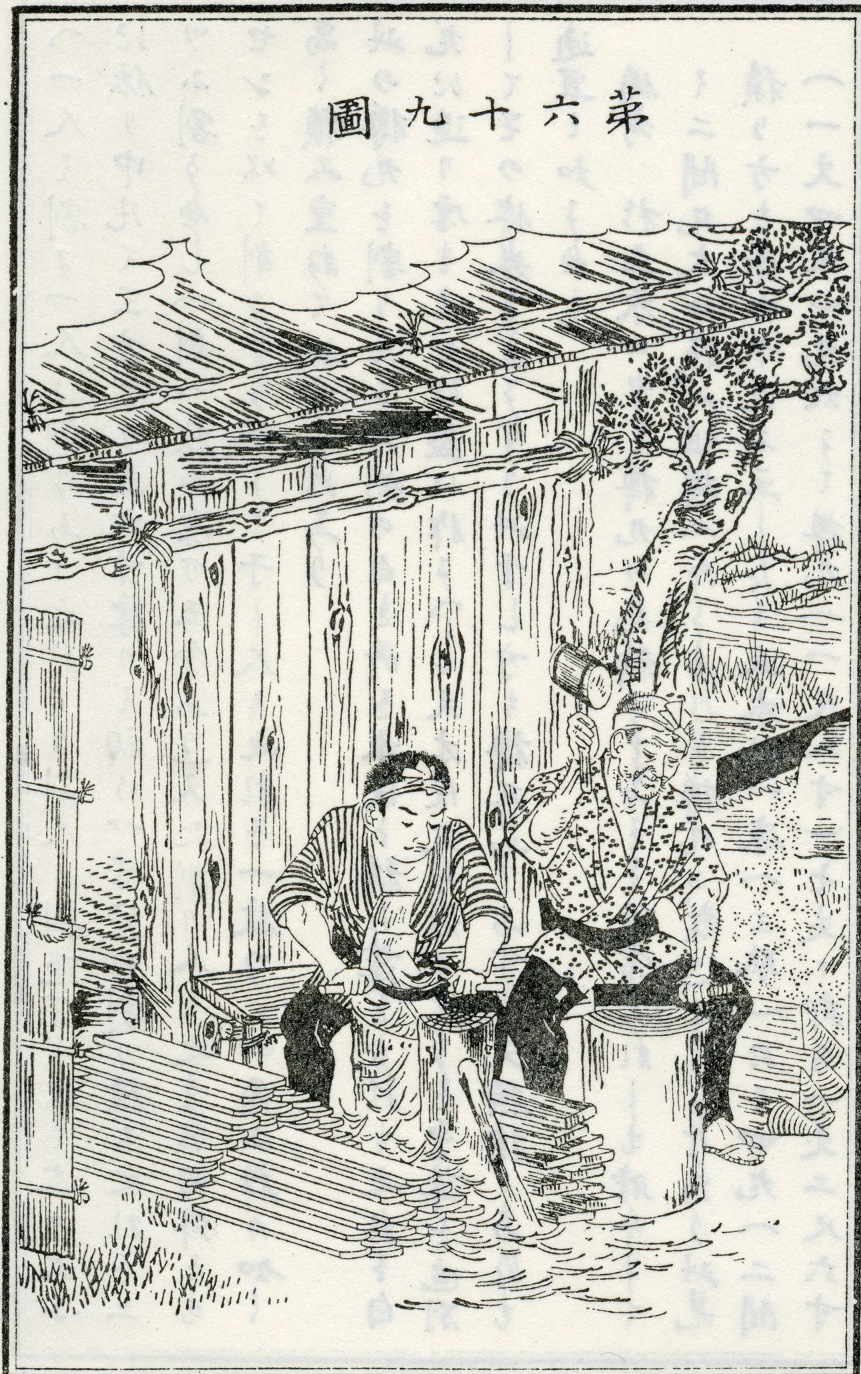

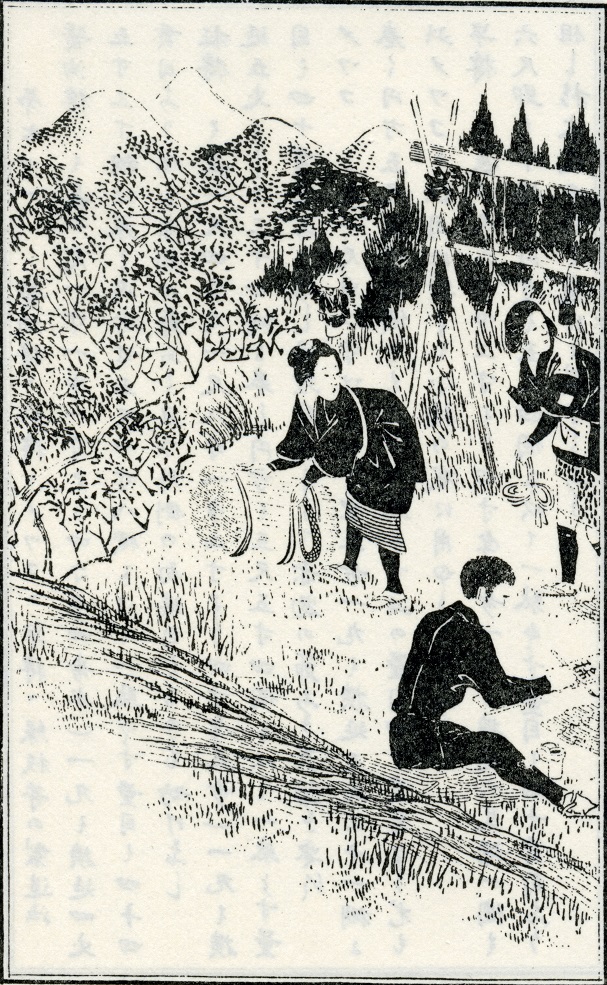
Staves are made from various parts of timber logs. Japanese cedar trees have an outer sapwood layer that is primarily white with a hint of yellow, and the inner heartwood is pale brown (which we call “red”). The staves that are made from the parts of the timber log between the white and red annual rings are called “kōtsuke”. The kōtsuke staves are the most preferred materials for making sake casks. Only a limited number of kōtsuke staves can be made from a single log. According to an historical document owned by the Sake Museum, kōtsuke staves were the most expensive of all. Sake brewers must have wanted to entrust their carefully nurtured sake to the casks that were made from the most superior materials.
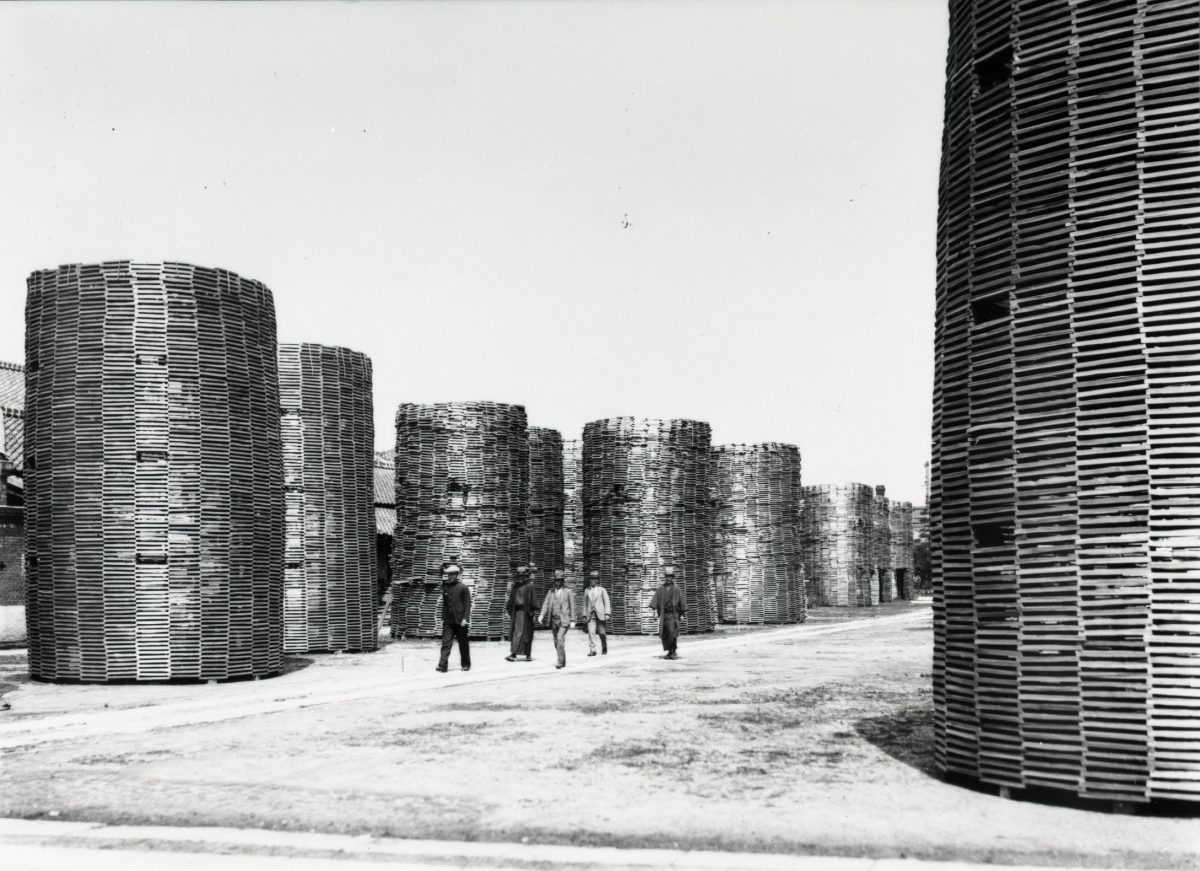
When the staves were delivered to a sake brewery during summertime, they were stacked outdoors, in the yard of the sake brewery for example, to be dried in the sunlight. The staves needed to be fully dried and shrunk prior to making casks, to avoid shrinkage after the casks were made, which would cause gaps between the pieces of wood.
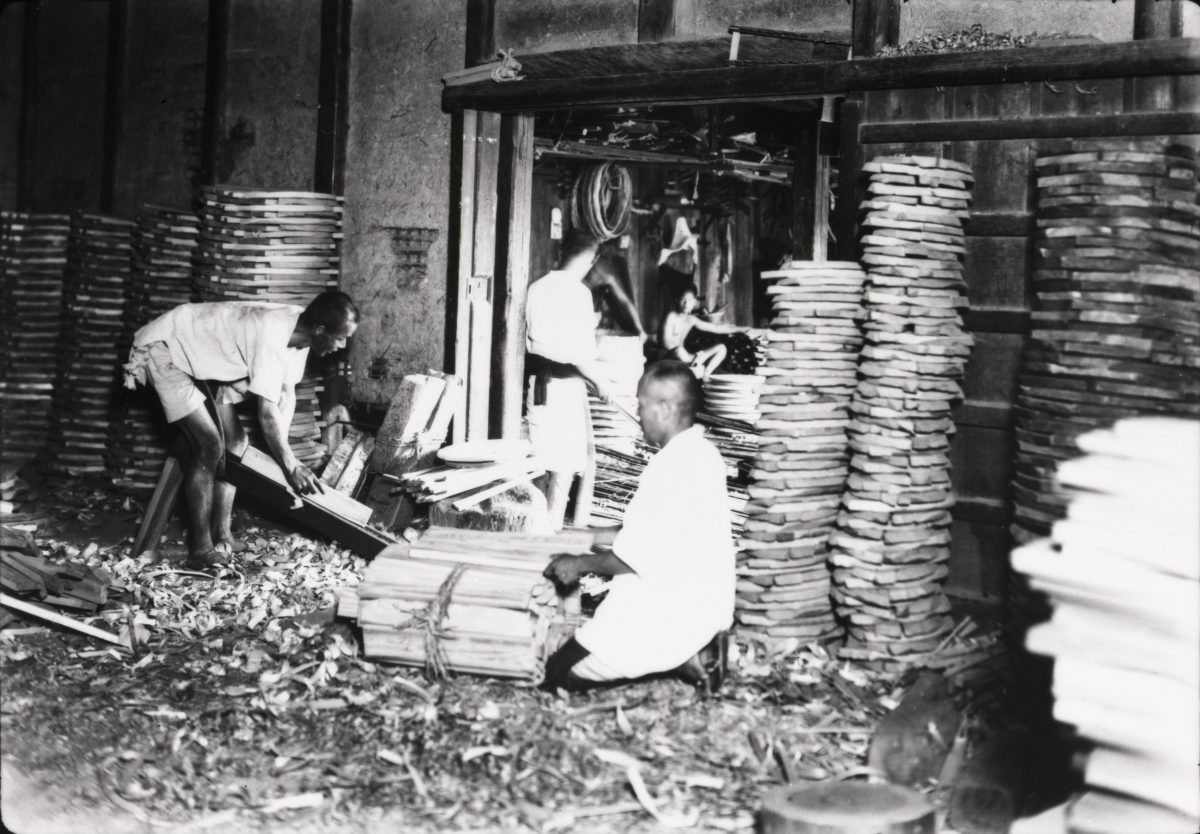
In the 19th century, anywhere between several hundred thousand to a million sake casks were shipped to Edo (present-day Tokyo) from Kamigata per year. All of those casks needed to be made by craftsmen! Some of the casks were made within the breweries by their hired craftsmen, but in many cases, more had to be purchased directly from cask making companies. Sake brewed in Kamigata continued to gain popularity in the Meiji era (1868-1912), and the demand for sake casks continued to rise. In Edo, previously used sake casks were collected and sold to soy sauce breweries in the Chiba area to be reused as soy sauce casks.
Sake casks, which had been the main containers for sake since the Edo period (1603-1867), were gradually replaced by glass bottles beginning in the 1890’s. The written resolution of the Nishinomiya Cask Making Association in 1926 shows that the cask makers were feeling insecure about the spread of the use of glass bottles at that time. Indeed, glass bottles have largely replaced wooden casks.
Today, we see wooden sake casks only on celebratory occasions. On the other hand, taru sake (cask sake), with the pleasant flavor of cedar, is sold by many sake brewing companies. Why don’t you enjoy some cask sake while thinking about the history of sake containers?


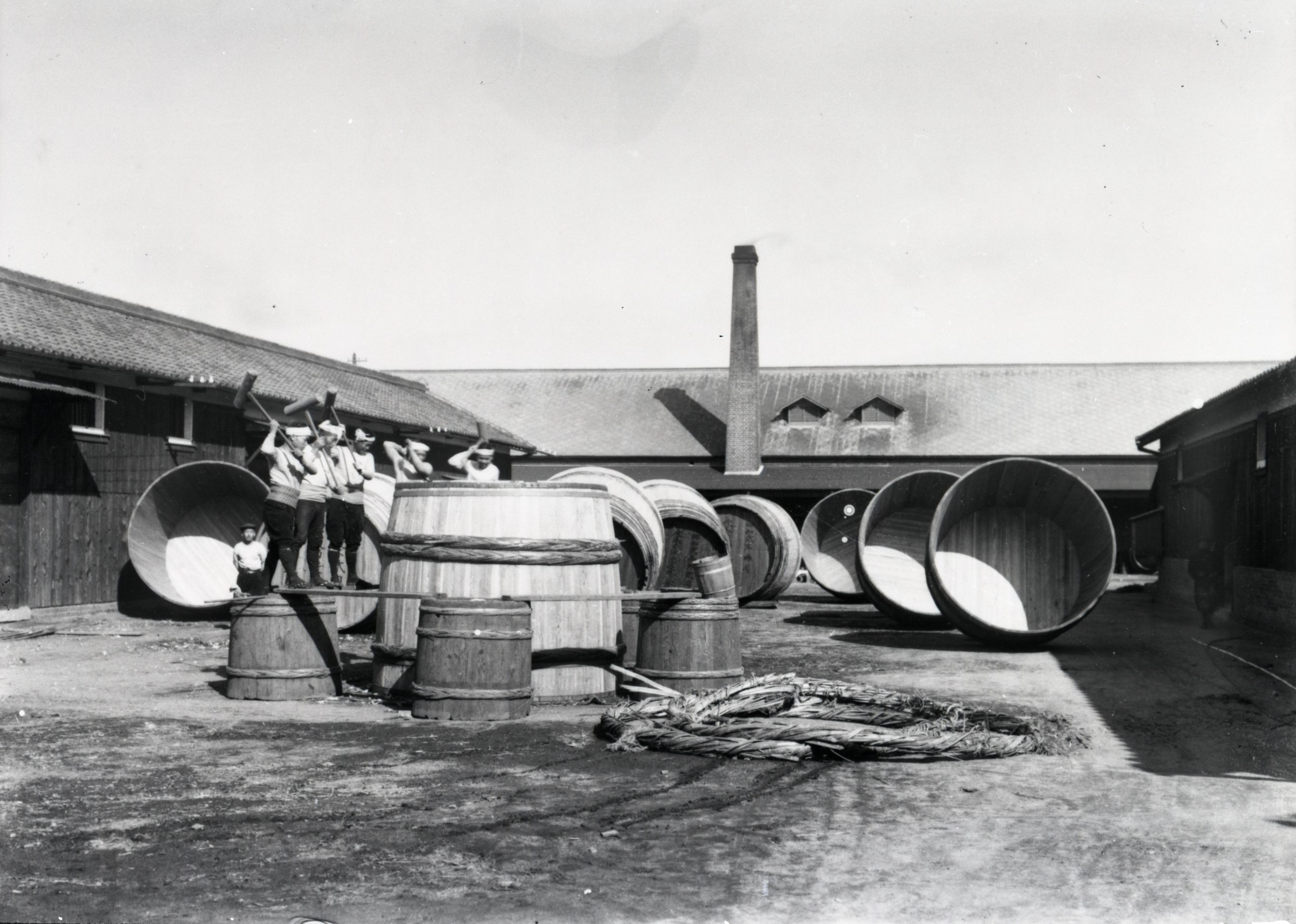
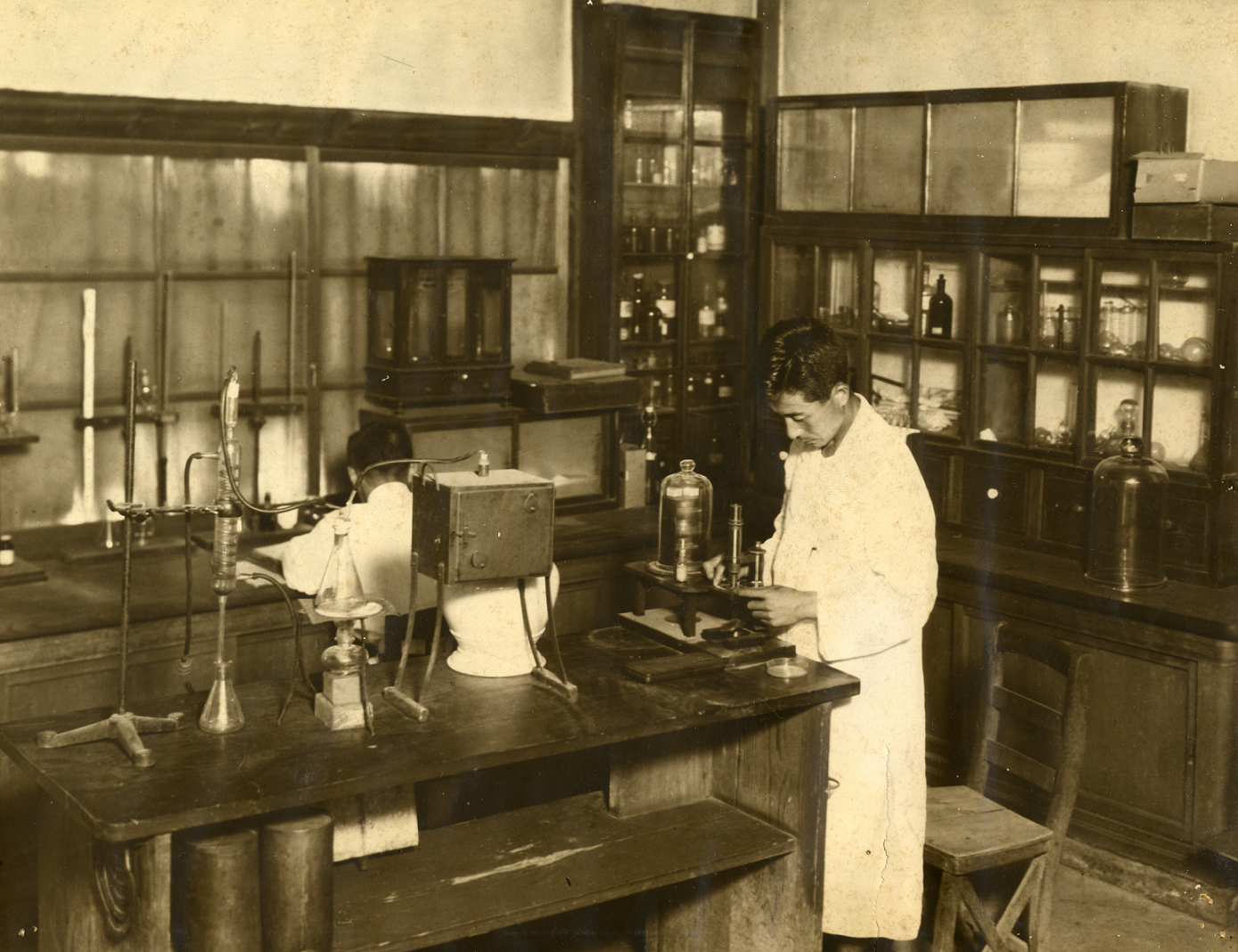
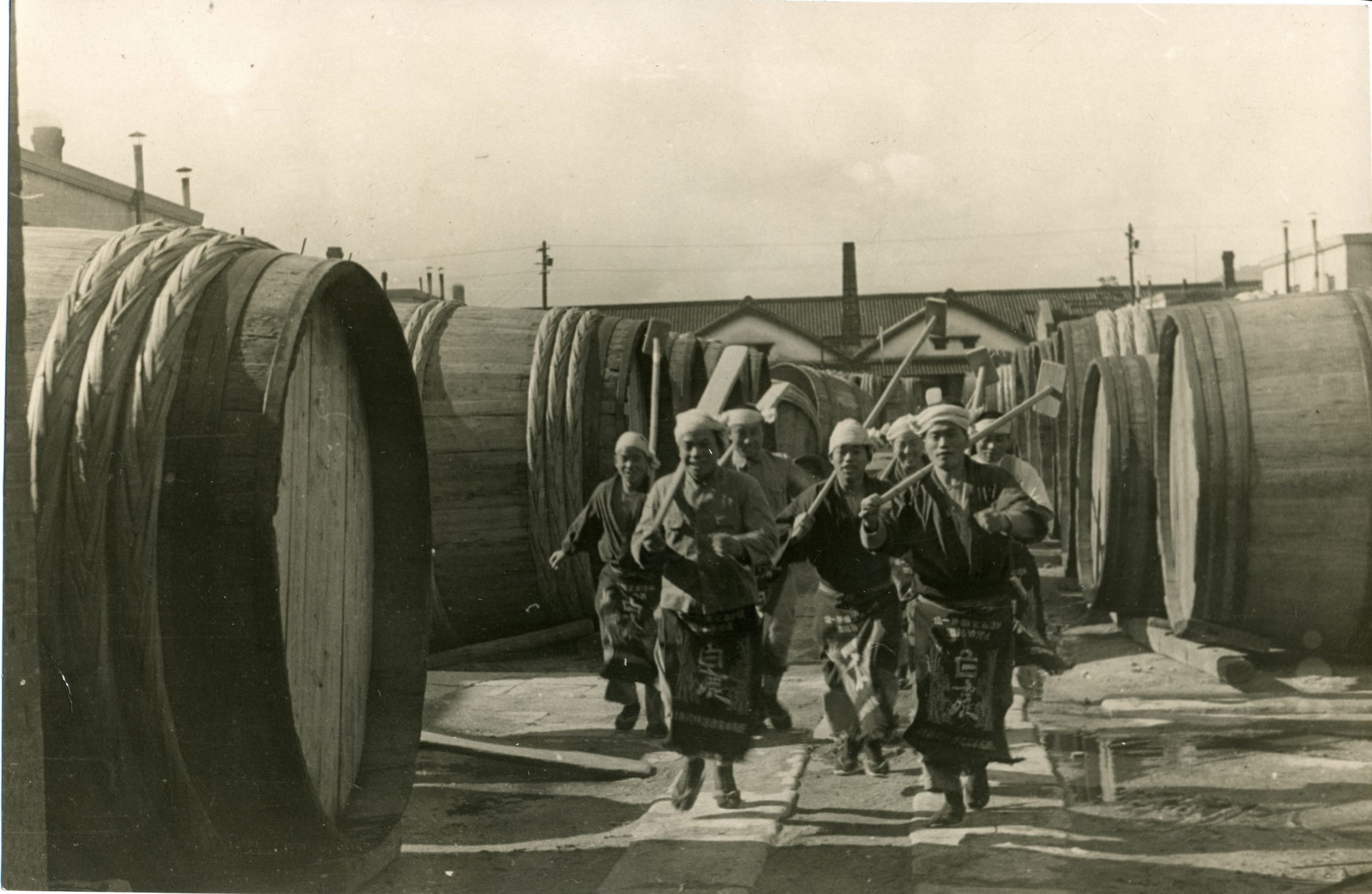


It’s an exactly professional work!